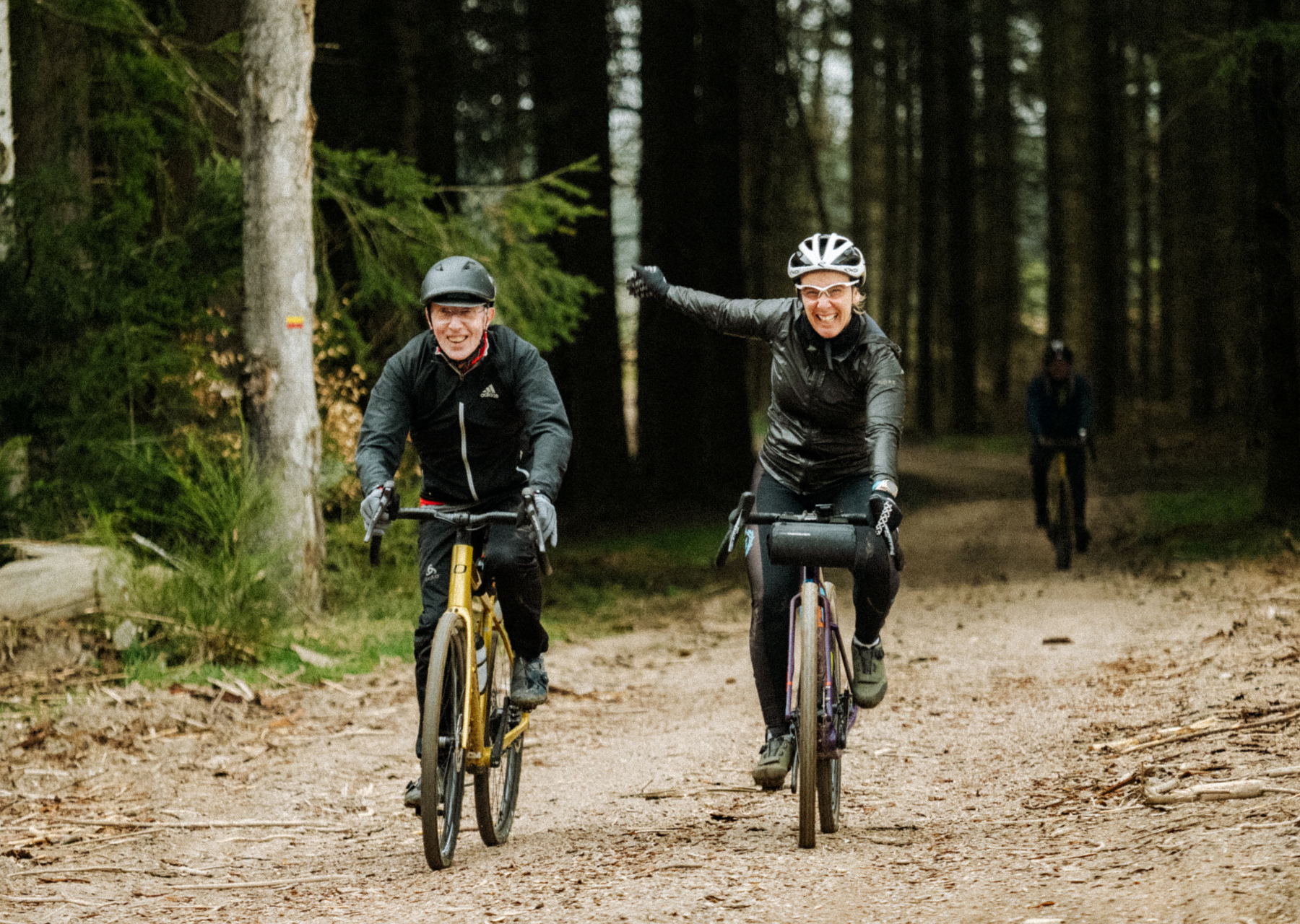Visiting Morocco by bike: must-see places !
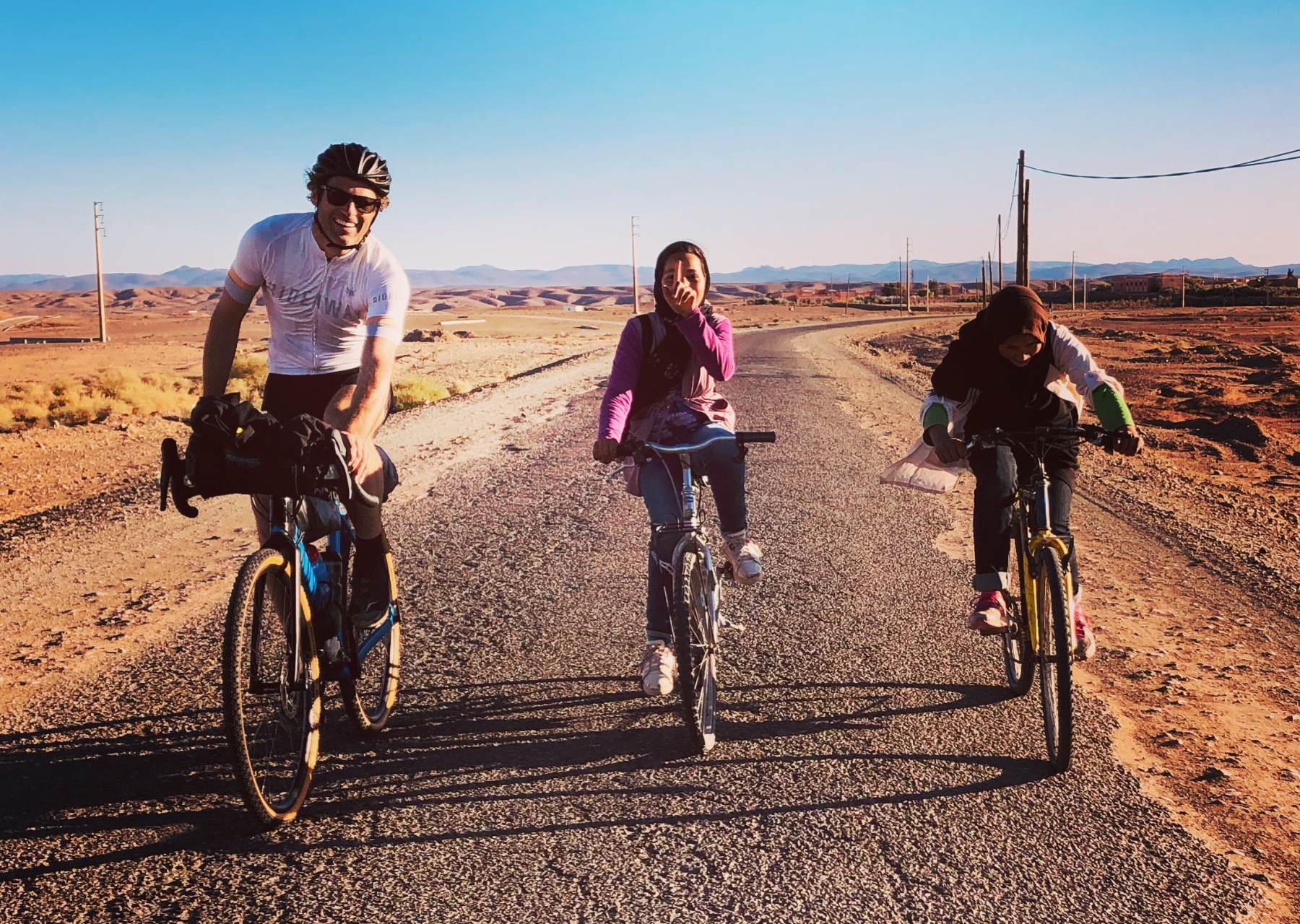
How about Morocco as your next gravel destination?! This North African country has exceptionally colourful landscapes, world renowned gastronomy and a very warm welcome from its inhabitants - what more do you need for an incredible cycling trip?!
Between majestic mountains, vast deserts, lush green oases and beautiful Berber villages, Morocco should be top of the list for all gravel riders in search of a total change of scene, freedom and adventure. Read on to delve into the adventure, and whet your appetite for what awaits with our must-sees and handy advice on how to prepare for the trip of a lifetime!
Exploring Morocco by bike: where adventure awaits around every corner!
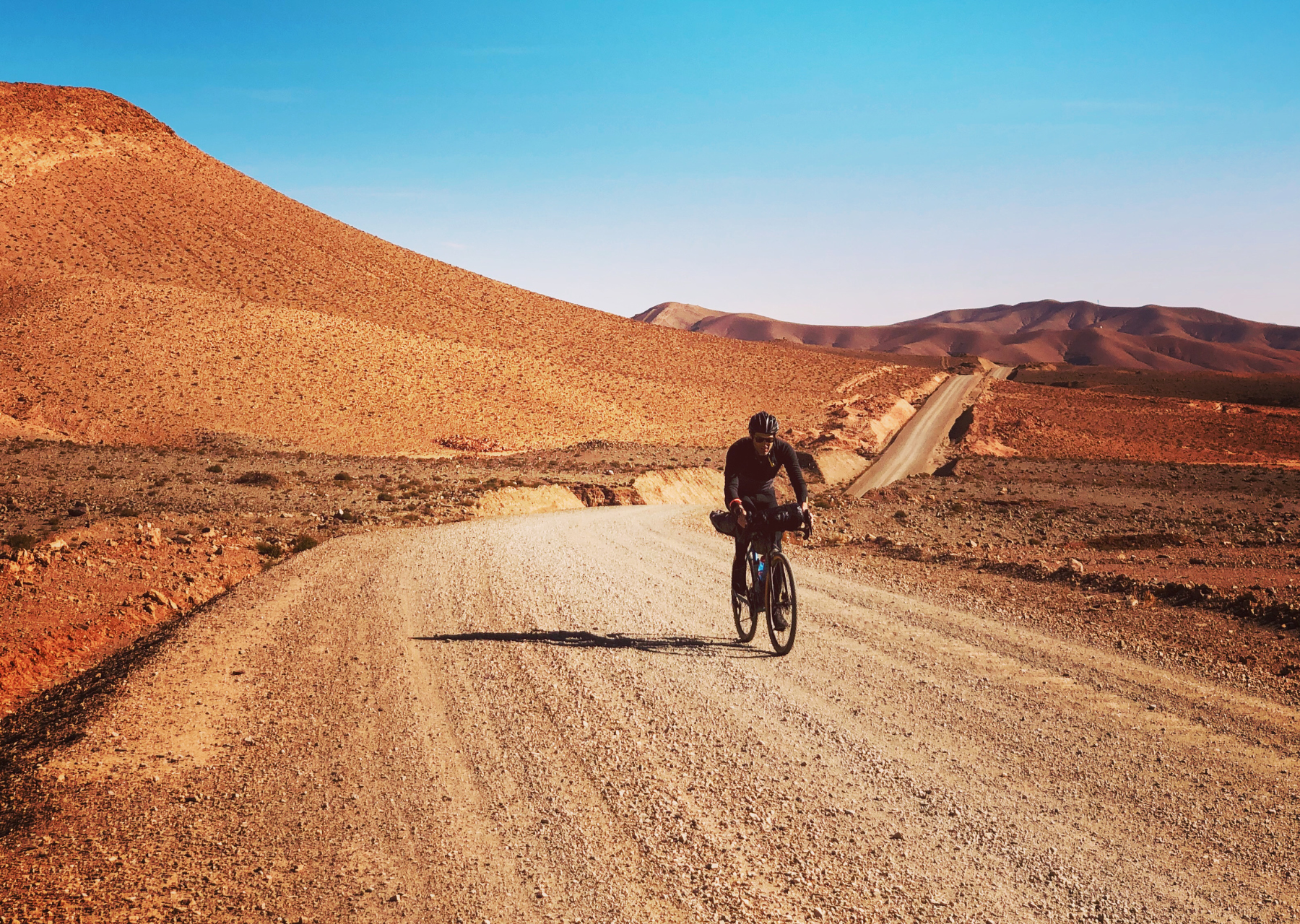
Morocco is becoming more and more popular with gravel lovers thanks to the incredibly diverse landscapes and the many roads less travelled. Whether you're a seasoned gravel rider looking for more technical routes or an outdoor lover looking to get away from it all, Morocco has you covered… Get ready for the journey of a lifetime!
An ideal climate all year-round
Firstly Morocco enjoys a sunny climate for most of the year, very attractive in the depths of a northern winter! You can cycle year round, but autumn and spring are ideal thanks to more moderate temperatures and the days still long. There’s still pleasant riding in summer though as the Atlas Mountains provide a welcome breath of fresh air.
Enormous variety of landscapes
From the Rif to the Saharan sand dunes, via the Atlas mountains and the beaches of the Atlantic coast, each region of Morocco is an opportunity to explore an ever-changing and always striking landscape. Follow one of the many gravel tracks that will take you through deep valleys, across desert plateaus and under orange-red mountains. We've rarely seen such a diverse country, so keep your eyes peeled - you're in for a real treat at every turn!
Authentic culture and quality gastronomy
Travelling by gravel bike in Morocco also means diving headlong into a culture that dates back thousands of years. The Berber villages, with kasbahs and colourful markets, will give you the opportunity to discover the legendary hospitality of the Moroccan people and sample some of the almost infinite local flavours. Imagine finishing your ride and relaxing under the stars with a delicious fragrant tajine in front of you… we can't think of a better way to end the day!
5 Must-See places for an unforgettable cycling trip in Morocco
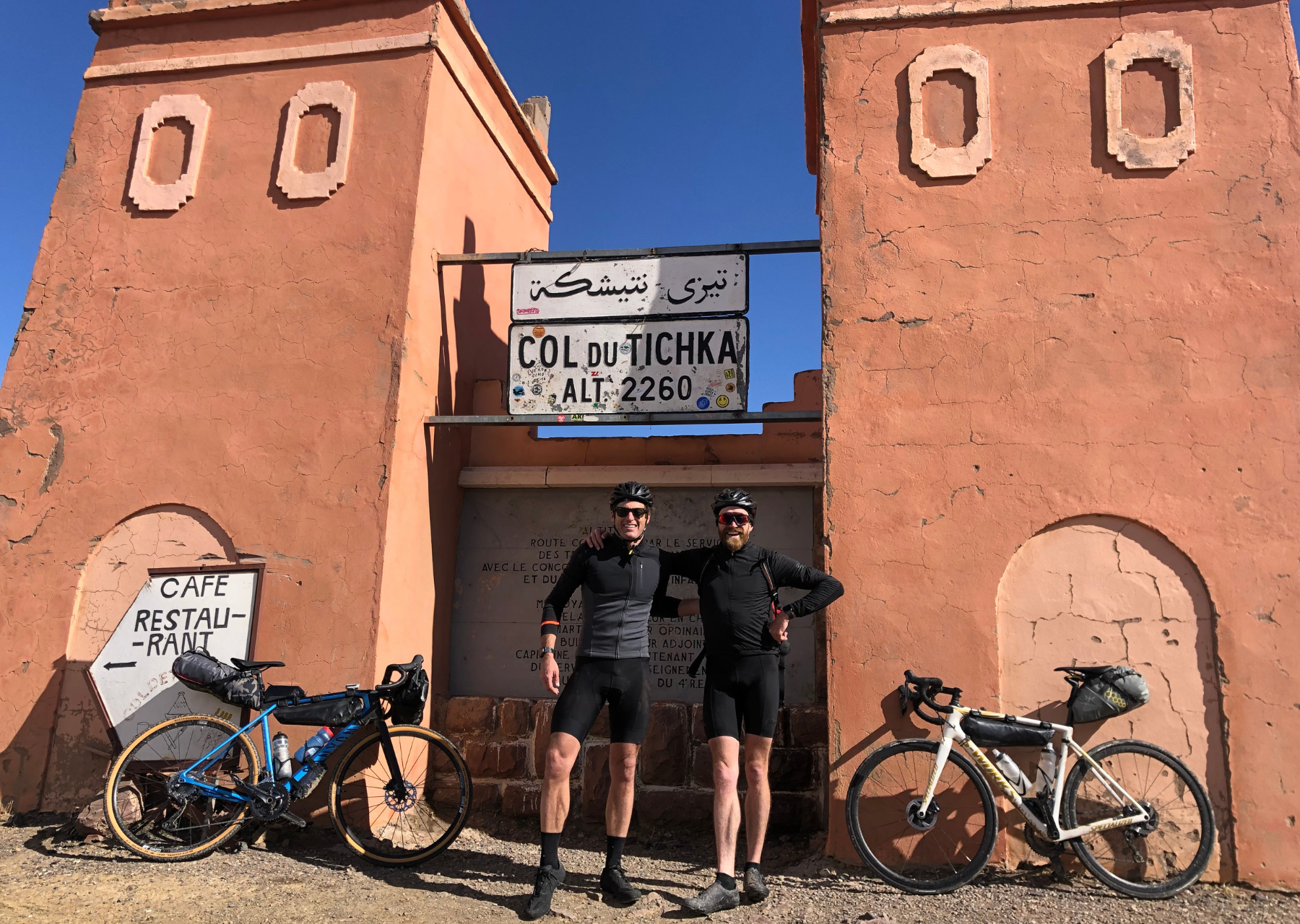
Exploring Morocco by bike, like everything else, need some preparation! To help you ensure you don't miss out on any North African highlights, we've selected a few here for you:
The hidden villages of the Atlas Mountains
From the height of Mount Toukbal to the Ourika, Tessaoute and Aït Bouguemez Valleys, there’s so much to explore in the Moroccan High Atlas, also known as the roof of North Africa. You’ll find yourself completely immersed in a remote land of high mountain passes, rivers, waterfalls and lush green valleys… with tiny villages hidden in the heart of the mountains and the Amazighs (or Berber) peoplewho maintain their traditional lives.
On your journey through the High Atlas, don't miss the Kasbah of Telouet, a masterpiece of traditional Berber architecture, and take the time to visit Aït-Benhaddou, a fortified village (or ksar) known for its distinctive architecture and listed as a UNESCO World Heritage Site.
Finally, the Dades and Todgha Gorges offer spectacular scenery, with their unique red rock formations that that are more like a film set than reality. And if you are visiting in spring, don't miss harvest time in the Valley of the Roses!
The Anti Atlas and Tafraoute
Less well known than the High Atlas, the Anti Atlas, located in the Souss-Massa region south-east of Agadir, is the last mountain range before the Sahara. Much less frequented than its big brother, the Anti Atlas offers exceptional landscapes up of desert plateaus, mountain ridges, hilltop villages, canyons, palm groves and hardly any tourists!
Exploring the towns of Taliouine, the saffron capital of Morocco, and Tafraoute, famous for its colours and myriad rocks, are also must-dos. Don't miss the rocks painted blue by Belgian artist Jean Vérame (nicknamed the ‘desert painter’) in 1984, just a few kms from Tafraoute.
An open-air work of art that transforms the desert landscape and invites you to look at the landscape in a whole new way. Finally, the Aït-Mansour gorges are a true natural wonder - at the end of a long winding road, the first palm tree appears, then a second, then hundreds! All giving life to a spectacular oasis hidden in the middle of a canyon of pinkish rock.
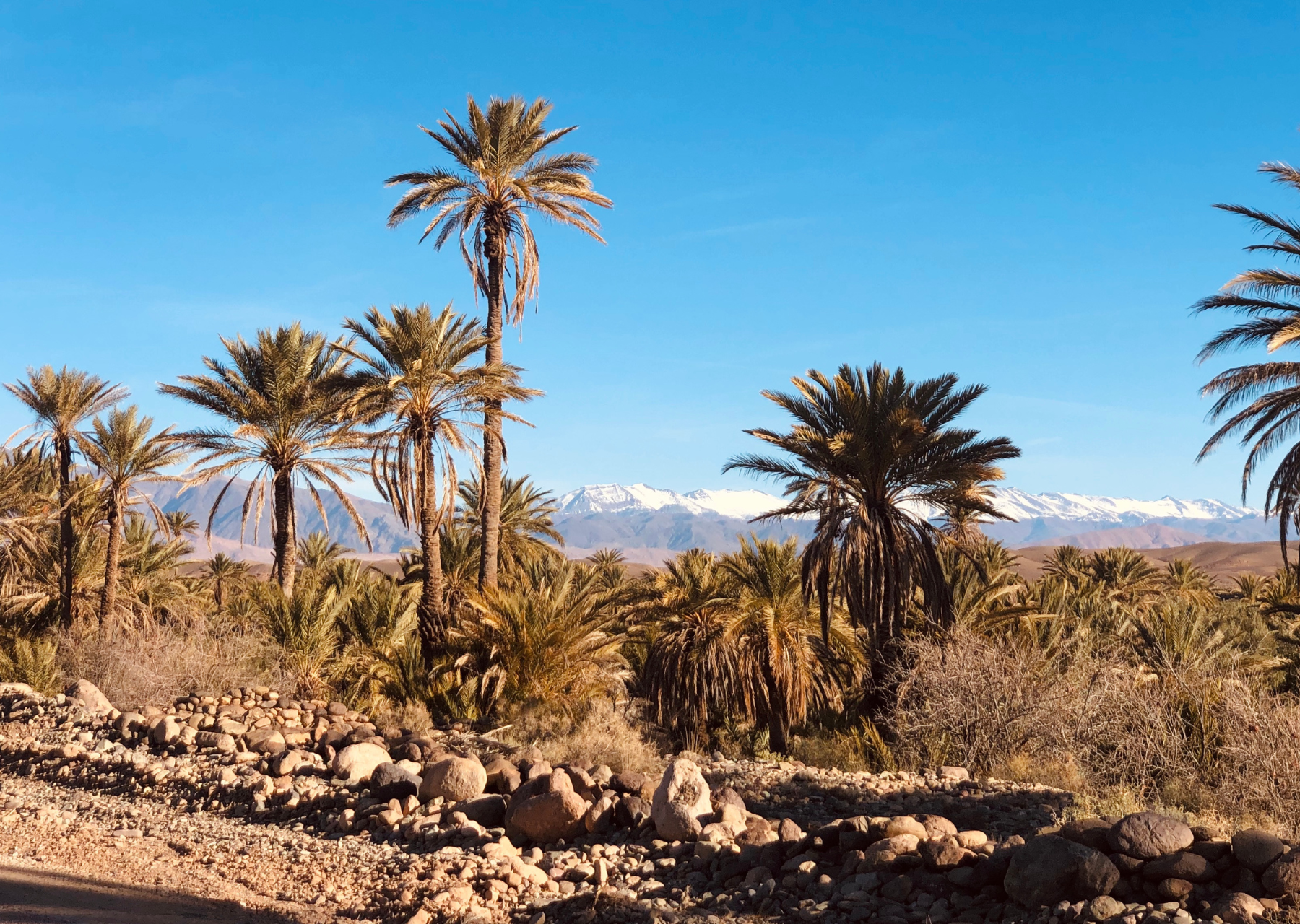
3. The Sahara Desert
When you think of Morocco the Sahara Desert is probably one of the first things to spring to mind! Indeed, it's hard to imagine travelling to Morocco without taking in the legendary vast stretches of sand. If you're worried that riding on the sandy tracks will test your legs a little too much keep going! As come evening you'll be richly rewarded with spectacularly clear starry skies. To whet your desert appetite, here are a few highlights not to be missed in the Sahara:
Merzouga and the dunes of Erg Chebbi - time to swap your bike for hiking shoes and hike into the dunes for an incredible sunset.
Ouarzazate and the Drâa Valley - one of the gateways to the Sahara, Ouarzazate offers several gravel routes that will take you straight to the palm groves of the Drâa Valley.
The Oasis de Tighmert - an incredible palm grove and a great place take a break and discover more about the local nomadic culture.
Essaouira and the Atlantic Coast
Ah, the medina of Essaouira! Otherwise known as the Pearl of the Atlantic, this charming coastal town of bewitching colours is an excellent starting point if you want to explore the cliffs and wild beaches of the Atlantic. Unlike the bigger towns and cities of Morocco, Essaouira brings a touch of peace and serenity. A welcome break after several days of cycling an the hubbub of Morocco!
Wander the maze of white houses with blue shutters, browse the stalls in some of the many small souks and climb the ancient city ramparts for an unbeatable view of the ocean. After exploring the pretty streets of the medina (a UNESCO World Heritage site by the way!) Head to the port for a different slice of genuine Moroccan life.
The Port of Essaouira is one of the most vibrant and lively parts of the city. Here you’ll see fishermen bringing in the catch of the day and a myriad of traditional and beautiful boats.
Ifrane and the Middle Atlas
Otherwise known as the Switzerland of Morocco, Ifrane stands out from other Moroccan towns due to its unique alpine style architecture. With sloping roofs, wooden chalets and perfectly manicured parks, it is a real surprise and a total contrast to the surrounding desert.
Surrounded by vast cedar and oak forests, lakes and waterfalls, Ifrane is also the starting point for numerous hikes. An ideal base from which to explore some of the most diverse Moroccan landscapes. The Middle Atlas is home to an extremely diverse flora and fauna, including Barbary macaques (an endangered species of monkey) if you’re lucky…
you’ll find them in the Azrou Park. In short, this region of Morocco is a real haven of green and fresh air and a surprising connection between Northern Morocco and the Sahara.
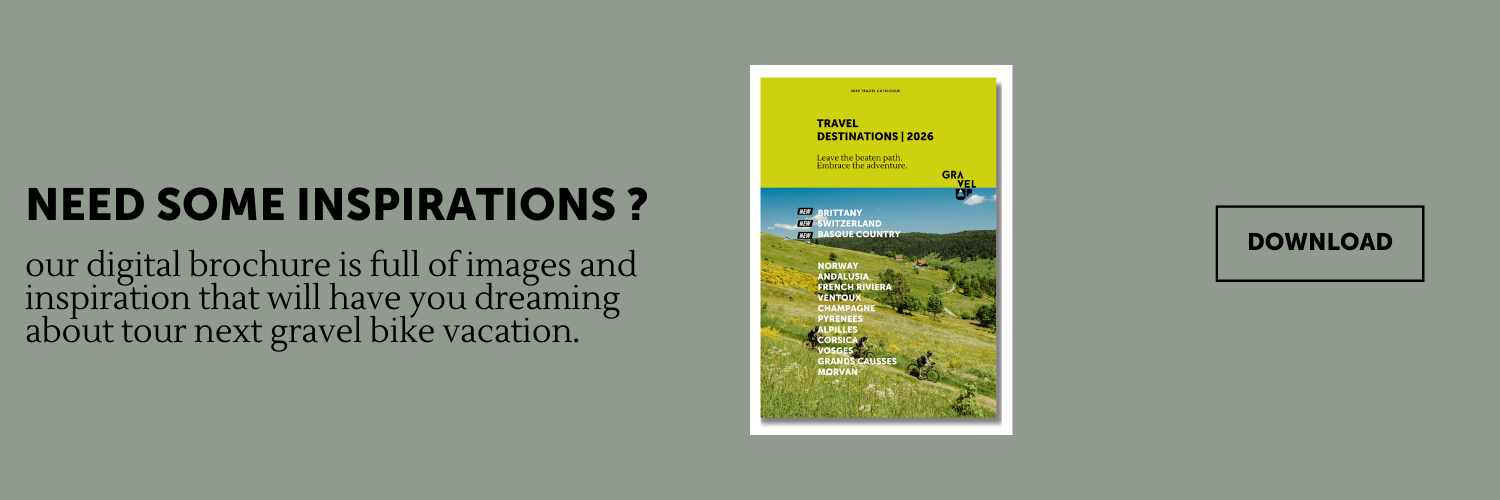
5 top tips for a cycling in Morocco gravel trip

To make the most of your gravel trip in Morocco, it goes without saying that **good preparation** is essential. Here are our top tips for a great trip:
The weather
The Moroccan climate varies considerably depending on the region, so you’ll need to be prepared for almost any temperature with a range of layers. Our favourite time to ride in Morocco is March to May and September to November, as temperatures are more moderate and less oppressive than in midsummer. And if you have to travel in summer, head to the coastal regions and/or the mountains, where the temperatures are more bearable than the desert! The temperature can vary drastically during the day so remember to pack enough warm layers to keep you warm after dark.
Routes to ride and transport
Most roads in Morocco are suitable for cycling, however you won’t find much signposting! Many drivers aren’t used to seeing cyclists and there’s often not much space for cyclists, so you’ll need to be vigilant, especially on the outskirts of large towns where the main roads can be particularly congested.
Public transport
isn't always equipped to carry your bike… so plan ahead and check in advance whether your bike can be transported, and bring a lightweight bike bag just in case.
Language
The official languages of Morocco are Arabic and Amazigh, and French is also widely spoken in major cities and tourist areas. There's nothing to stop you learning a few words of Arabic which will be much appreciated and very useful when you’re off the beaten track!
Currency
The official currency is the Moroccan dirham. ATMs are available in major cities, but you should take some cash with you or exchange some euros or dollars on arrival. It’s very useful to always have some cash on you, especially in small towns and rural areas where card payments may not be possible. This will also come in handy for tips which are commonplace in Morocco.
Bartering in Morocco is a part of everyday life and an integral part of Moroccan culture. So when you're strolling through the souks or markets don't hesitate to discuss prices!
Food and drinking water
It’s essential to stay well hydrated all day long especially if you're cycling in the heat. It’s best to avoid intreated tap water in Morocco - stick to bottled water if you don't want to find yourself bedridden for the rest of your stay! As a precaution avoid raw food like salads and unpeeled fruit that could have been washed in untreated tap water.
Safety
Morocco is generally a safe country for travellers but you should be vigilant especially in bigger cities as there’s a risk of pickpocketing. In terms of road safety pay attention to traffic, especially on larger roads, as drivers won’t always be used to sharing the road with cyclists. It's strongly recommended to wear a helmet even if it’s not the law, and be as visible as possible with reflective clothes and patches. Bike repair shops are rare outside the major cities, especially if you need specific parts, so remember to bring your tools and spare parts to avoid getting stuck!
Good manners and traditions
Even though Morocco receives many tourists every year, it remains a very conservative country with specific rules of dress. You should dress modestly and cover your legs and shoulders when not on your bike. Respect local customs particularly in and near anywhere religious. Take off your shoes before entering a mosque (if visitors are allowed) and avoid photographing people without their consent. This can be very frowned upon, especially by the elderly!
Explore Morocco by gravel bike with GravelUp!
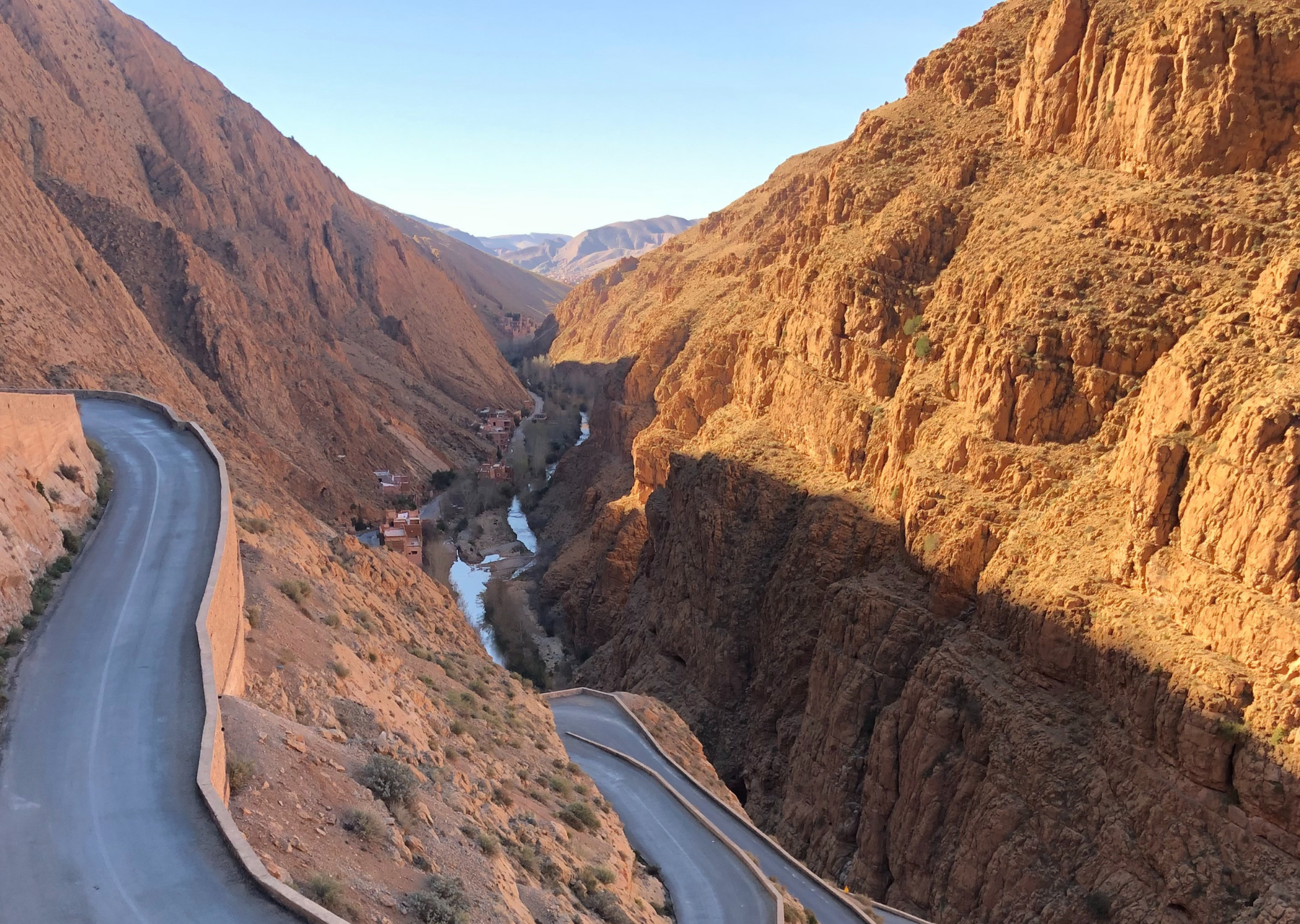
Joining a gravel trip with GravelUp means exploring one of the most beautiful destinations in Europe (or further afield!) on a tailor-made adventure.
On every adventure we take care of everything to give you an unforgettable gravel experience - comfy accommodation, hearty breakfasts, meals and snacks designed to fuel your ride, wellbeing and culture. Our trips are fully guided and we also have top-of-the-range gravel bikes available to rent.
From hard-core riders to bike-packing novices, at GravelUp we're committed to satisfying everyone's needs. With various levels on offer, we have something for everyone.
Additionally, our trips are fully guided, and we also offer high-quality gravel bikes for rent.
All you need to do is embark on the adventure—GravelUp takes care of the rest.
→ Learn more about the Morocco Destination
→ Contact us for a customized travel request

